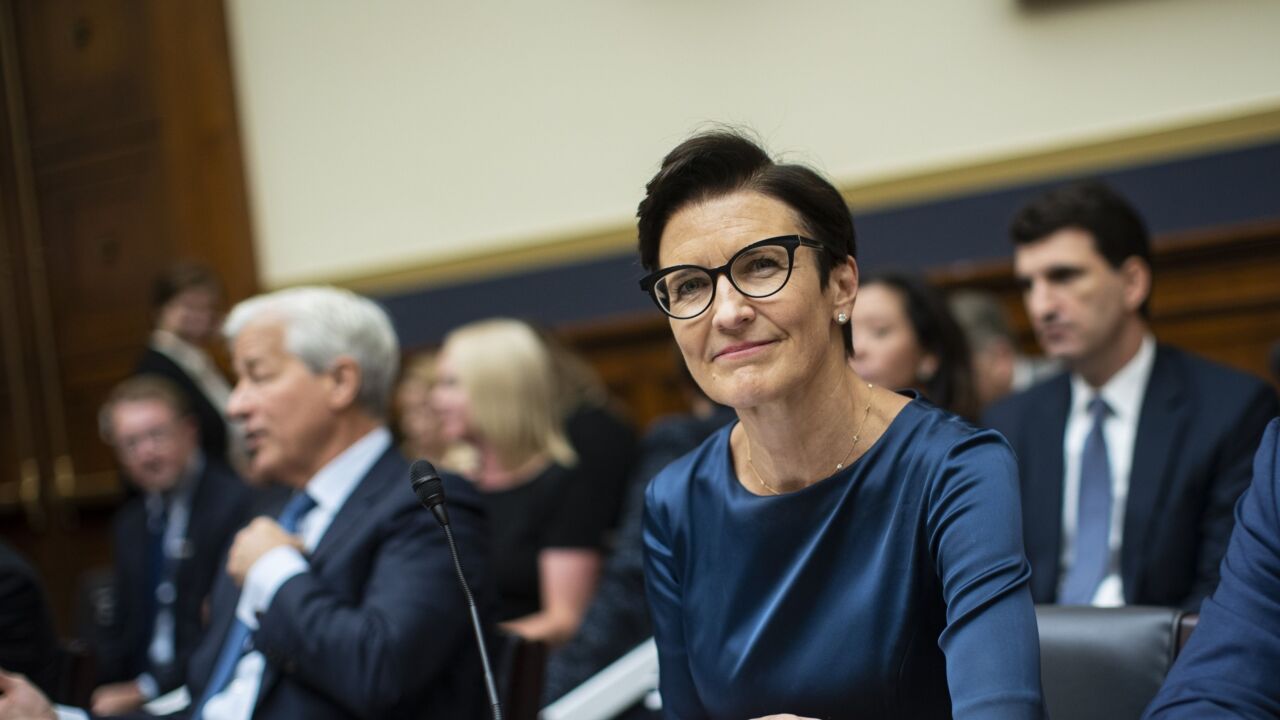-
Union First Market Bankshares in Richmond, Va., has agreed to acquire StellarOne in Charlottesville, Va.
June 10 -
Columbia Banking System has agreed to buy West Coast Bancorp. The acquisition, valued at about $506 million, will create a community bank in the Pacific Northwest with more than $7 billion in assets.
September 26 -
Park Sterling Corporation in Charlotte, N.C., announced Monday that it is buying Citizens South Bank in Gastonia, N.C., in a deal that would instantly double its size.
May 14 -
A healthy bank preemptively sells. Unspent capital burns a hole in a private-equity investor's pocket. A niche player waves the white flag. These are among six deal scenarios you'll see repeatedly next year.
December 17 -
Henry Michaels and Jerry Wiant of RBC Capital Markets give their outlook for deals and pricing, discuss why taking stock can still be a good thing for sellers and advise bank buyers to manage investor expectations.
July 6

A stock-price drop is rarely good news, but in the case of Union First Market Bankshares (UBSH) it very well could be.
The Richmond, Va., company's
The downside of the all-stock deal announced Monday is the dilution to the $4.1 billion-asset Union First's tangible book value, which it says would take five years to restore. In the last few years investors have shown a strong preference for deals that have
Union First's stock fell 1.3%, to $19.76, on Monday a hit, for sure, but a much gentler one that some of its peers have absorbed.
"I feel like it is healthy to see a quasi-merger of equals with a long payback and to see the stock pretty much holding OK," says Chris Marinac, an analyst at FIG Partners. "It is important because this is the
Analysts will be following the stock closely over the next few weeks to see how it performs.
"It is early and is only one deal, but this could be the start of the market lightening up on the fear of tangible book value dilution," Marinac says.
Recent examples of bank stocks that were punished for long earn-back periods include Columbia Banking System (COLB), which announced in September that it would
The possible attitude change fits into a larger shift in the way investors are valuing banks and M&A in the sector. For the last several years stock prices have been tied to tangible book value, but bank stocks are beginning to trade off earnings, observers say. With Union First promising a "double-digit" earnings accretion, that might explain the softer reaction to the earn-back in Union First's agreement.
"When banks were not making much money a couple of years ago, investors rightly looked at tangible book value for a metric," says Jeff K. Davis, managing director of financial institutions for Mercer Capital. "Investors are much more focused on earnings now."
However, Davis cautioned that investors need to consider the "totality of the deal," because tangible book value still matters.
"I never thought they should focus solely on book dilution and conversely, they shouldn't solely focus on earnings accretion," Davis says. "It is important in banking for folks to never get too far away from the importance of tangible common equity, because that is what is levered."
Union First Chief Executive G. William Beale says the earnings accretion, a planned share buyback in connection with the deal and a 20% internal rate of return are outweighing the longer earn-back period.
However, attributing the first-day stock performance purely to metrics shortchanges the strategic benefits of the deal, he says. At $7.1 billion in assets, the combined company would be the largest community bank headquartered in Virginia, excluding Capital One Financial.
"You can't discount the strategic nature of this one," Beale said in an interview.
During a conference call on Monday, Beale repeatedly touted the scale and competitive edge the combined entity would have because of its size. He said it was a negotiated transaction that stemmed from both banks trying to figure out how to become more efficient.
"As the boards of both banks went through their strategic planning process and looked at the operating environment that we are in today and appears to be before us, as well as the economic environment, it seemed to make sense that to both parties that you would need scale to operate better," Beale said. "Both groups were working on initiatives to improve their efficiency ratio, improve operating numbers, and I think both boards realized at the same time that the best way to deliver that shareholder value was really to combine."
The deal, which carries the third largest price tag in 2013, comes at a time when dealmaking has slowed. Although dealmakers say there are a lot of merger discussions, few result in an actual agreement.
"I would say it is a combination of persistence and timing," Beale says. "To do this, you just have to keep working at it."





